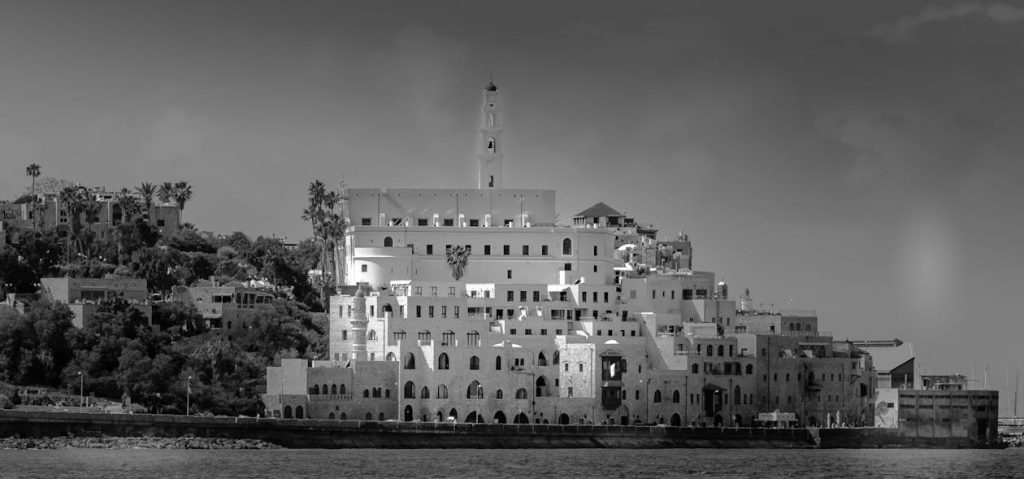
Exploring Bauhaus Elegance in the Heart of the Eastern Mediterranean
The Eastern Mediterranean is home to Bauhaus architecture, blending modernist design with local cultural influences. Originally a German movement, Bauhaus architecture found a second home in this sun-drenched coastal region.
Architectural Digest notes that Bauhaus interior design originated from Germany’s Bauhaus school, which operated for 14 years between 1919 and 1933. Influenced by Germany’s industrial strength, Bauhaus aesthetics emphasize tubular steel, various metals, and streamlined functionality over decoration.
Unlike the ornament-heavy Arts and Crafts movement, Bauhaus design prioritizes minimalism, geometric forms, and modern manufacturing techniques.
Bauhaus architecture reflects a vision of simplicity, practicality, and harmony with the natural environment. Many buildings showcase flat roofs, curved balconies, and geometric shapes, defining their timeless aesthetic appeal.
Exploring these architectural treasures offers insight into how modernism shaped the Mediterranean’s unique architectural identity. In this article, we’ll explore the most striking Bauhaus landmarks in this dynamic region together.
Rothschild Boulevard
Rothschild Boulevard in Tel Aviv remains an essential destination for anyone admiring Bauhaus architecture in the Mediterranean region. The boulevard is lined with white buildings featuring clean lines, minimalist facades, and functional designs.
The Jerusalem Post states that Jewish architects fleeing Nazi Germany built many buildings in the 1930s and 1940s. According to the Tel Aviv municipality, Rothschild Boulevard showcases many restored Bauhaus structures in their original form. Walking along Rothschild Boulevard offers the best way to experience the local architectural heritage.
Rothschild Boulevard isn’t just about architecture. It is also a bustling cultural and social hub. Trendy cafés, boutique shops, and art galleries line its lively, tree-shaded walkways, attracting visitors. Exploring this area reveals Bauhaus’s role in shaping a modern, stylish urban environment.
Accommodations near Rothschild Boulevard make it easy for travelers to experience the area’s unique charm.
According to Isrotel, luxury hotels nearby offer elegant rooms, rooftop pools, and fine dining with views of the city skyline. Boutique stays in restored Bauhaus buildings provide a blend of modern comfort and architectural history. Business-friendly hotels with meeting spaces and executive lounges cater to professionals visiting the area.
How do cultural events on Rothschild Boulevard connect with Bauhaus aesthetics?
Many cultural events, like open-air exhibitions and design festivals, celebrate Rothschild’s architectural heritage. These events showcase contemporary interpretations of Bauhaus principles in art, fashion, and urban planning. The boulevard serves as a living space where Bauhaus ideals merge with modern creativity.
Dizengoff Square
Dizengoff Square is a lively public space that highlights Bauhaus architecture’s lasting impact on city planning. Originally designed in the 1930s, it was meant to be a modernist hub for urban life. The area has evolved over time, but its Bauhaus influence remains evident in several key features:
- Surrounding buildings showcase geometric shapes, asymmetry, and a strong focus on functional aesthetics.
- The square has undergone multiple transformations, altering its original Bauhaus-era charm.
- Recent renovations have balanced historic preservation with contemporary urban design elements.
- Its central kinetic fountain serves as an artistic nod to Bauhaus-inspired public art.
As per Secret Israel, Menashe Design Gallery on Dizengoff Street showcases contemporary art from emerging and established international artists.
The gallery features diverse artworks, including paintings, sculptures, and photography, displayed in a bright, modern space. Art enthusiasts can explore unique pieces while engaging with knowledgeable staff who provide insightful information.
Recent renovations have restored its design integrity while incorporating contemporary elements for modern visitors. The square’s centerpiece, an iconic kinetic fountain, blends Bauhaus principles with public art innovation. Day or night, Dizengoff Square remains a dynamic example of Bauhaus-inspired urban design.
How does Dizengoff Square integrate greenery with urban aesthetics?
The square features carefully placed trees and plant installations that soften its modernist design. Bauhaus architects believed in harmonizing nature with urban environments, and this balance is evident here. Greenery helps create a welcoming public space while maintaining Bauhaus ideals.
Neve Tzedek
Neve Tzedek, one of the region’s oldest neighborhoods, beautifully integrates Bauhaus elements with historic architecture. Originally influenced by European and Ottoman styles, Neve Tzedek evolved with Bauhaus-trained architects’ contributions.
Modernist structures feature simple facades, functional balconies, and streamlined designs among older, ornate buildings. Walking through its streets, visitors experience a striking contrast between traditional charm and contemporary minimalism.
Restored Bauhaus structures now house chic cafés, galleries, and high-end boutiques catering to artistic communities. This fusion of past and present highlights Bauhaus’s adaptability in diverse architectural settings. Neve Tzedek remains a perfect example of urban transformation, blending historical heritage with modernism.
How do art galleries in Neve Tzedek reflect Bauhaus influences?
Many galleries display modernist artworks that align with Bauhaus’ emphasis on function and simplicity. Clean, open spaces allow for optimal presentation of geometric, abstract, and minimalist pieces. This creates a seamless connection between Bauhaus architecture and contemporary artistic expression.
The White City
Time Out Worldwide mentions that Tel Aviv’s White City boasts over 4,000 UNESCO-listed Bauhaus buildings, creating a striking architectural landscape.
Rothschild Boulevard serves as a bustling hub for protests, parades, startups, and diverse daily foot traffic. The area’s thriving restaurant scene showcases top Israeli chefs blending innovation with locally inspired street food.
Flat roofs, curved balconies, and shaded walkways maximize comfort in warm coastal environments efficiently. Many buildings underwent careful restoration to maintain their Bauhaus integrity while meeting contemporary urban needs.
Walking through the White City feels like stepping into an open-air museum of modernist architecture. This architectural legacy continues shaping the city’s evolving skyline and urban identity today.
Why do some Bauhaus buildings in the White City have curved balconies?
Curved balconies were designed to maximize natural light and improve airflow. This design element also contributes to the sleek, futuristic aesthetic that defines the Bauhaus style. Today, these balconies remain a signature feature of White City’s architectural charm.
Bauhaus architecture in the Eastern Mediterranean blends modernist principles with unique cultural influences and adaptations. Tel Aviv embraced Bauhaus, creating an architectural identity defined by clean lines and geometric simplicity. The design emphasizes functionality while harmonizing urban spaces with nature for aesthetic and practical balance.
This architectural movement continues shaping the city’s evolving skyline and design trends today. Contemporary architects draw inspiration from Bauhaus principles, blending history with modern urban development. Walking through these streets feels like stepping into a living museum of modernist artistry. The region’s Bauhaus heritage fuels a cultural scene celebrating architectural history and innovation.


